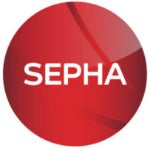Specially commissioned research being undertaken by packaging experts at the University of Ulster’s School of Engineering on behalf of the specialist machinery manufacturer Sepha has revealed that technology-based non-destructive leak detection is significantly more accurate in detecting weak seals in blister packs than blue-dye test methods.
The initial results of the research, which form part of an in-depth study to be published as a white paper later this year, have found that a laser-based detection device, Blisterscan, is capable of detecting 50% more holes at 10µm and 20% more defects at 15µm than traditional blue dye testing. The study is looking at blister packs using different tablet sizes, foil thickness and pack formats in order to demonstrate that global pharmaceutical companies who embrace technology-led testing procedures will reduce cost and improve quality on their packaging lines.
Specialist machinery manufacturer Sepha is urging pharma packaging and pharmaceutical manufacturers to start thinking smarter about leak-testing procedures in advance of a major, academic white paper to be published later this year. The in-depth study into the accuracy of the technology-based leak detection device, Blisterscan, verses traditional blue dye test methods is being carried out by Professor Dorian Dixon of the University of Ulster’s School of Engineering. Initial results of the study were presented to Sepha’s worldwide agent and distributor network at a major global conference held in Belfast recently.
Dr Dixon said: “These initial results highlight that Blisterscan is much more reliable, accurate and capable of detecting 15µm leaks than blue dye.” Further tests on 10µm, 15µm, and 20µm holes will be carried out as Dr Dixon moves towards the completion of his white paper at the end of 2010. Improved accuracy and reliability of blister pack testing, combined with non-destructive cost-savings, present a strong argument for Blisterscan to become the most appropriate leak detection device in modern pharma production facilities.
Agents, who travelled from as far as India, China and Brazil to attend the three-day conference, were also introduced to three new pharmaceutical packaging machine prototypes developed in response to the economic challenges facing the global pharmaceutical industry. The new machines will offer effective yet lower cost options for detecting leaks in pharmaceutical packaging such as blister packs.

